Hachee (Dutch Beef & Onion Stew)
This post may contain affiliate links. See my disclosure policy.
Hachee is a traditional beef and onion stew found in virtually every Dutch home. It’s a delicious comfort dish to enjoy during the cold winter months. The long, slow cooking time produce super tender meat and a rich sauce with wonderful depth of flavor. This authentic hachee recipe is one the whole family will love!
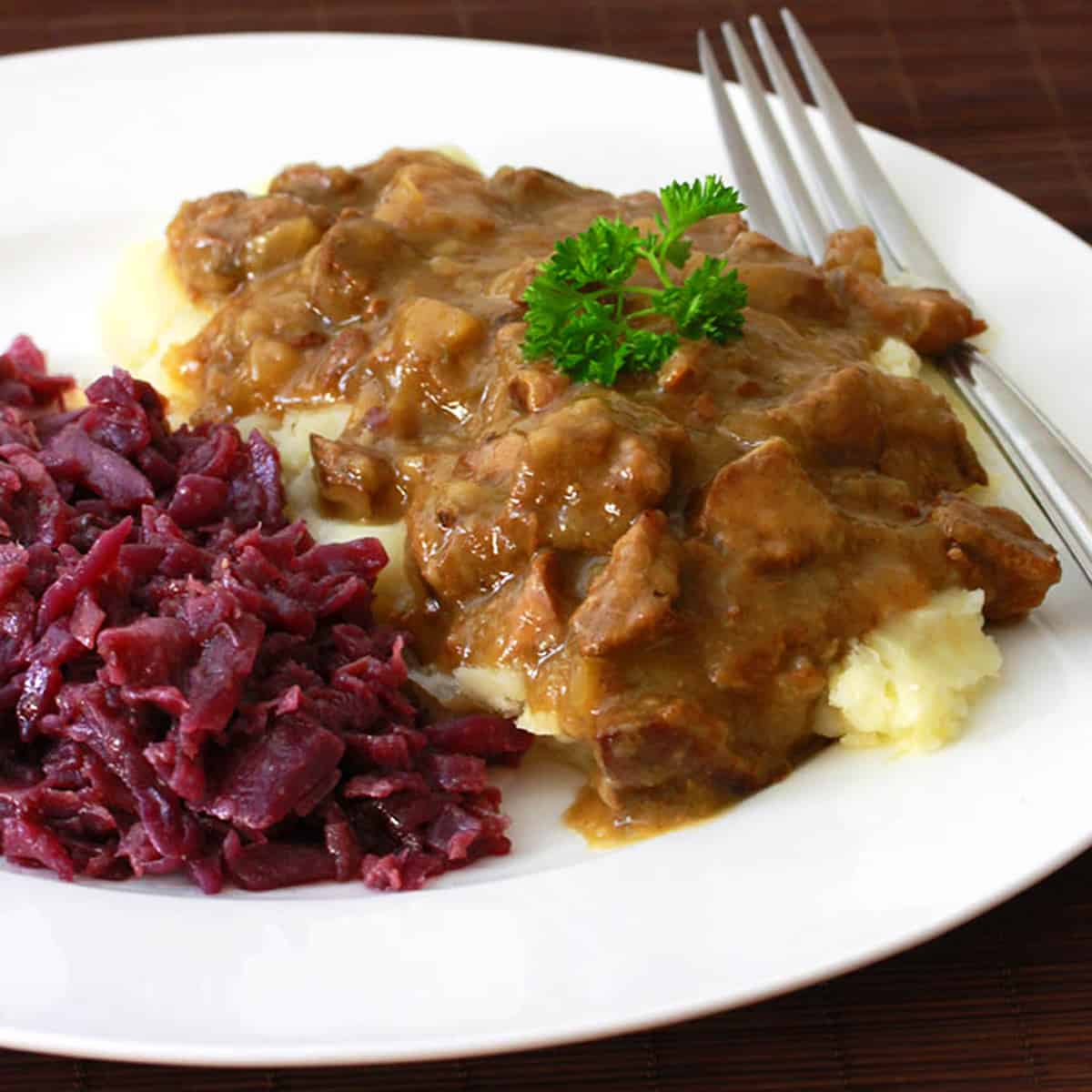
What is Hachee?
The word hachee has its origins in the French hacher, meaning “to chop” and Hachee is sometimes referred to as a “hash.” Hachee has been around since the middle ages and like many of the traditional dishes of Europe that we know and love today, it was originally a peasant dish, created as a means of using up leftover meat and vegetables. The vinegar was used to tenderize tough pieces of meat, much like the French used wine in Coq Au Vin). Less expensive vegetables likes onions were used in generous amounts. A long cooking process further ensured the meat would be tender. Hachee remains a popular and much-loved dish in the Netherlands. So much so that you can find it ready-made in grocery stores. But nothing beats homemade, and your patience in the long, slow cooking process will yield results that will make your taste buds swoon.
Traditional Seasonings in Hachee
The flavor profile of Hachee is significantly different from the traditional beef stews we know here in the U.S.. Hachee uses equal parts of beef and onion and the onions are caramelized. The featured flavors in this stew are cloves, juniper berries, black peppercorns, bay leaves and vinegar – all of which come together to provide a wonderful depth of flavor that is both rich and comforting. The flavor of Hachee shares similarities with German Sauerbraten.

I first made this recipe over 10 years ago when my husband’s family came for a visit. My father-in-law had lived in the Netherlands for a while as a young adult and fell in love with the country, its people, and its food. Many of the dishes he enjoyed there over 40 years ago he hadn’t had since, and he has often mentioned longing to enjoy them again. So I wanted to surprise him with a traditional Dutch meal. I narrowed it down to three options: Boerenkool Stampot, Hutspot, and Hachee. I decided on Hachee. It’s a little more interesting, plus you can’t find the smoked Dutch sausages (rookworst) here that are traditionally eaten with the other two dishes. And it also gave me the excuse to finally make the braised red cabbage with it that many of my readers had been requesting – a side dish that is equally popular in Germany where it is known as Rotkohl.
As my father-in-law sat down to dinner he instantly recognized the dish. “This is the dish I had almost every night during my first two months in the Netherlands!” It was the first time he had had it in over 40 years and he savored every bit. We all did.

Hachee Recipe
Let’s get started!
Cube the beef and pat it dry with a paper towel – this will ensure that it browns well. Sprinkle with a little salt and pepper.
Brown the beef in a Dutch oven. Brown the cubes on all sides. Brown in batches so as not to overcrowd the beef – that will prevent it from browning properly. Remove the beef and set aside, leaving the burnt bits on the bottom of the pan – those will provide a lot of flavor to the stew.

Add some more butter and caramelize the onions until golden brown. Add the flour and stir to combine.
Add the beef to the onions.
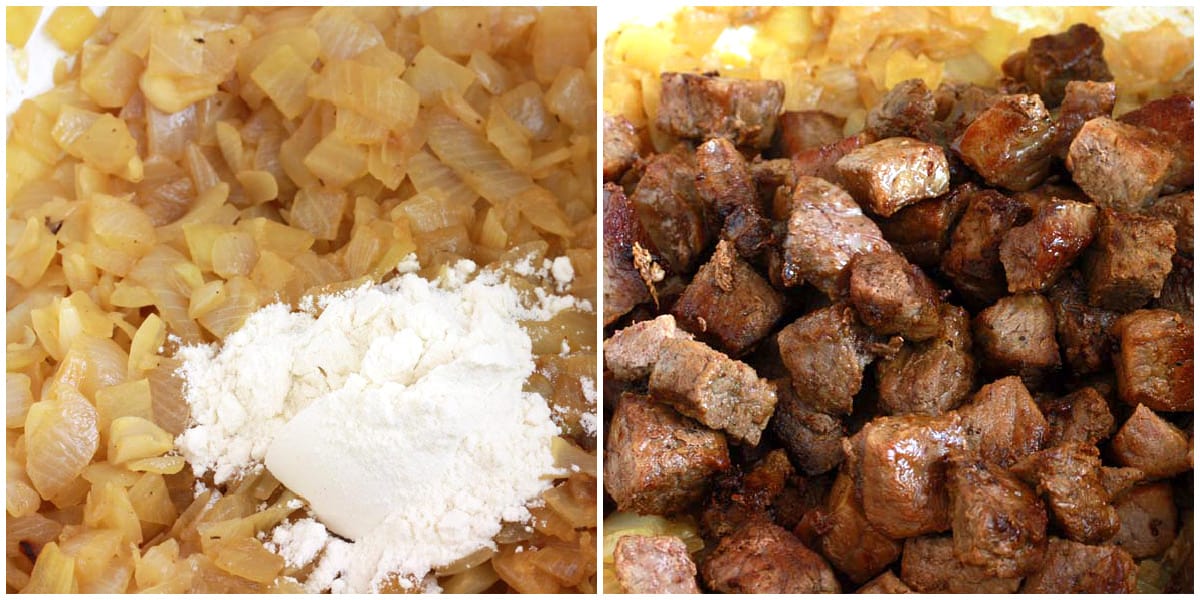
Add the beef broth and the seasonings. Bring to a boil, reduce the heat to low, cover and simmer for 2 1/2 hours. Uncover and simmer for another 30 minutes to help thicken the sauce. If it needs further thickening, make a slurry with equal parts of flour and water and stir it into the stew, stirring constantly to prevent lumping. Return to a simmer until the stew is thickened.
Add salt, pepper and more red wine vinegar to taste.
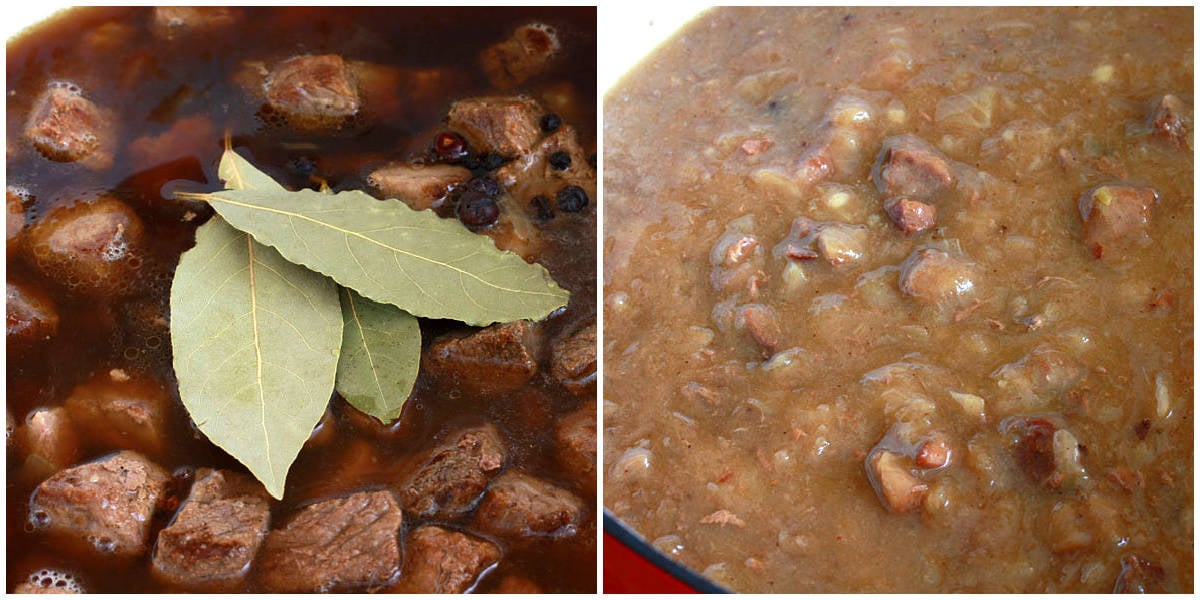
Hachee is traditionally served with aardappelen (potatoes) and rode kool met appeltjes, which is braised red cabbage with apples, also known as Rotkohl in German. A serving of applesauce is also common.
Eet smakelijk!
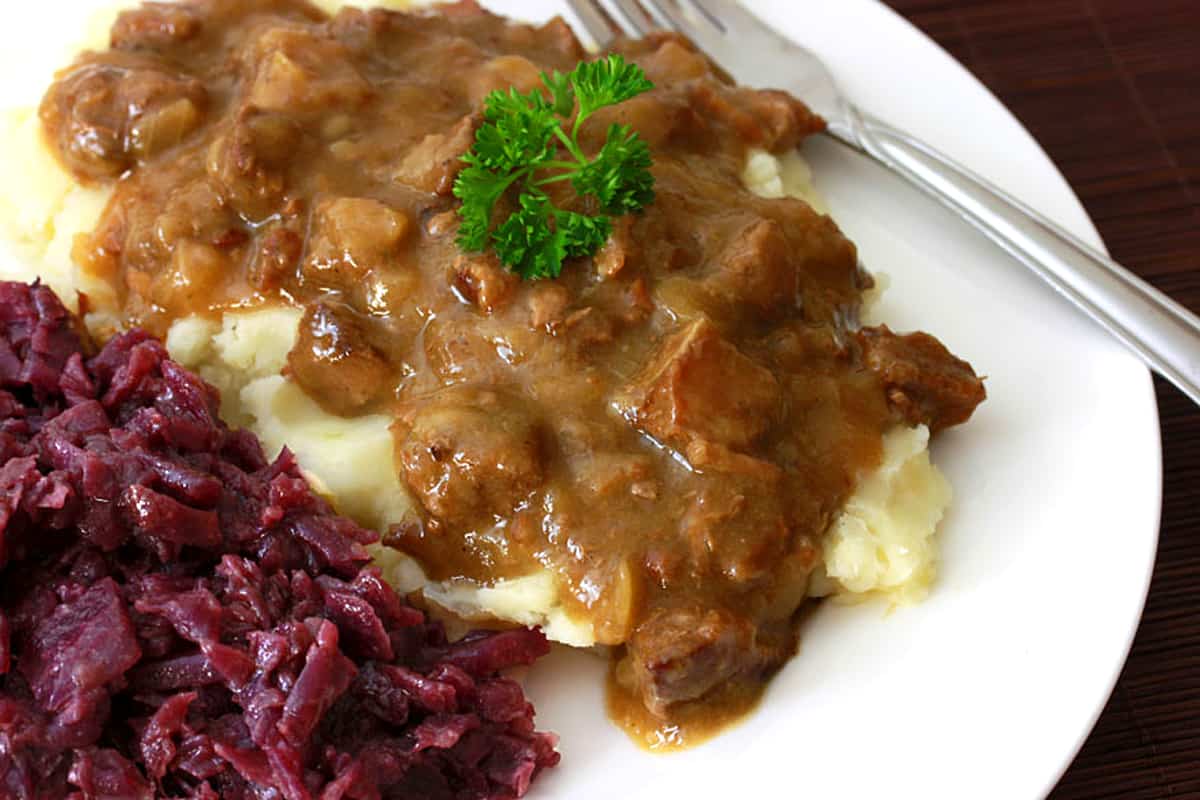
For more delicious beef stews from around the world be sure to try my:
- Swedish Kalops
- Hungarian Goulash
- Guinness Stew
- Pörkölt
- Beef Bourguignon
- Sega Wat
- Old Fashioned Beef Stew
- African Peanut Stew
- Szegedin Goulash
Save This Recipe
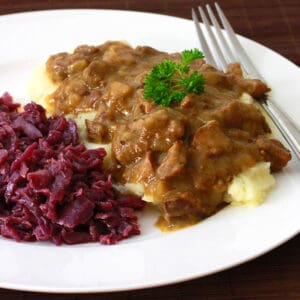
Hachee (Dutch Beef & Onion Stew)
Ingredients
- 2 pounds stewing beef (e.g. chuck) , cubed in 1/2 in. pieces, blotted dry with paper towel, lightly seasoned with salt and pepper
- 3 tablespoons butter
- 2 pounds yellow onions , about 4 large, finely chopped
- 1/4 cup all-purpose flour
- 4 cups good quality beef broth or stock
- 3 large bay leaves
- 4 cloves
- 4 juniper berries
- 10 black peppercorns
- 2 tablespoons red wine vinegar
- 3/4 teaspoon salt
- 1/4 teaspoon freshly ground black pepper
Instructions
- Melt the butter in a Dutch oven over medium-high heat. Brown the beef on all sides, working in batches so as not to overcrowd. Transfer to a plate and set aside. Leave the browned bits in the pan (important for flavor).Add the onions and some more butter if needed and cook until caramelized, about 25 minutes. Add the flour and stir until combined. Add the beef to the onions, stir to combine, and cover with the beef stock just until covered. Add the seasonings and red wine vinegar, stir to combine.Increase the heat and bring the stew to a boil. Reduce the heat to low, cover, and simmer for 2 1/2 hours. Uncover and simmer for another 30 minutes to further thicken the stew. Add salt, pepper and more red wine vinegar to taste. Discard the juniper berries, cloves, and bay leaves. Leave in or discard the peppercorns.Serve with mashed potatoes and braised red cabbage.
Nutrition
Originally published on The Daring Gourmet January 6, 2014


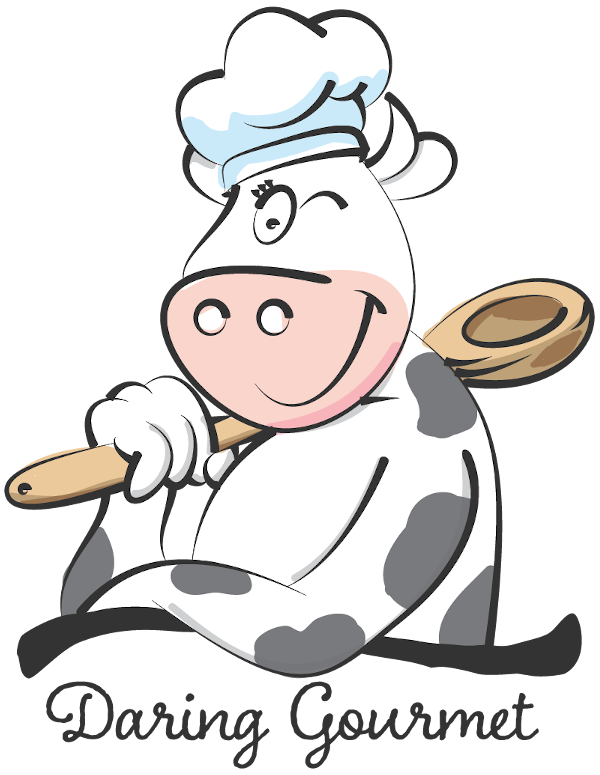
















Good day thank you for sharing your reciepe very simple preparation.I will try this to cook for my dutch lovely boss.Please share some simple ingredients and reciepe.Have a good day and stay safe.MANY THANKS AND GODBLESS.
Great authentic recipe. I live in central Oregon where the junipers on the High dessert thrive;
some are hundreds of years old. I have used the berries crushed on grilled salmon. Gives it a great flavor. Was born and raised in Amsterdam and still love Dutch dishes. Am making your recipe tomorrow with a nice slab of beef chuck and the berries of course. Have you ever heard of the dish Raukost? If I remember it well it involved warm boiled potatoes with either raw Brussels endive or any other raw leafy vegetables or combination thereof and ‘slasaus’ i.e. ranch dressing. The warm potatoes are mixed with the veggies and dressing and Hoopla! easy, simple dinner. We loved it.
Cheers!
Thank you, Orlando. I am not familiar with Raukost but thank you for the introduction, it sounds like a delicious, easy dinner indeed!
Hallo allemaal, I was born and raised in Utrecht. My mother cooked Hatcher once a week during the winter months. I have cooked this dish for my family at least once or twice a year myself and they always enjoyed it. As a matter of fact I’m going to today. Even though I live in Florida and with the warm weather I enjoy this traditional food every once in a while. Brings me back!!!
Tried this for our crazy 2020 Thanksgiving meal, celebrating my kids’ heritage. Delicious! Only thing I would change is a little less butter. So good!
Thank you, KCO, I’m so glad you enjoyed it!
I make this all the time, but in place of beef broth I use beer, and I also add nutmeg. Then I serve over borenkool
Tasted just like moms! Thanks for sharing, I will keep this recipe for ever and would love to have any more you have.
Wonderful, thanks so much, Laurie!
If I was to add vinegar…if that’s part of the “old” way how much would I add?
Hi Paul, it’s just according to taste. I would start with less, like a tablespoon, and then you can taste it to determine if you want to add more.
We use to add “ontbijtkoek” (Peijnenburg is recommandible, it some kind of gingerbread) with mustard. It is placed on top of the stew to get a rich flavour, and to thicken it in.
Hi Jeffrey, that’s exactly what they do in certain regions of Germany when making Sauerbraten. It’s a delicious touch.
I use leftover roast and the gravy. I carmelized the onions, cube the beef, added the onions with the leftover gravy, whitevenegar and a little sugar. Simmer for a hour add water as needed
That is exactly how I make mine. An easy recipe, definely comfort food
Me too. How my mother always made it.